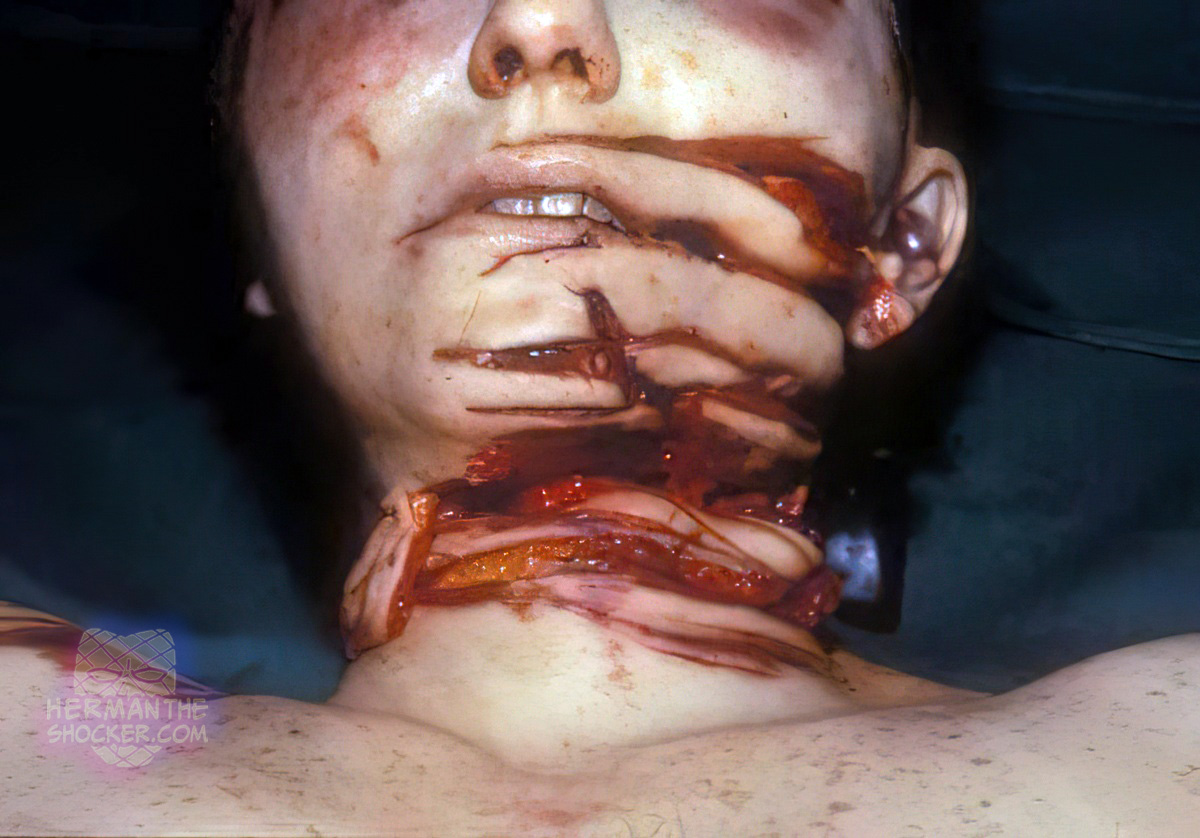USA. A cluster of incised wounds across the face and neck. Incised wounds can also be referred to as “cutting” injuries. They result from contact with a sharp-edged object, with the force of impact running in a direction that is roughly parallel (or tangential) to the skin surface. If the object inflicting the injury is in motion, an incised wound can be thought of as resulting from a slashing action of the object. Typically, the angles at either end of an incised wound will have a sharp appearance. Determining the direction that an incised wound was inflicted – for example, from right to left across the neck, or from left to right – is not usually possible, unless small tags of skin can be seen “rolled-up” along the margin of the wound, in a fashion similar to certain abrasions where the direction of force can be determined.
Incised wounds produced by smooth-edged blades and serrated-edged blades can be indistinguishable from one another; however, serrated weapons may produce surrounding superficial skin injuries as described above. Alternatively, there may be similar marks elsewhere on the skin surface, distant from stab and incised wounds. As with clusters of stab wounds, incised wounds can also be clustered.
Latest posts








